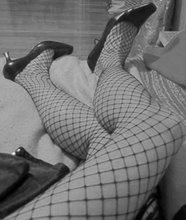and I saw this exhibition at the Rhode Island National Wildlife Refuge @ Kettle Pond. Charlestown, RI On exhibition until December 1, 2007
The artist, Ana, received a New Works grant [of $15,000] from the Rhode Island Foundation to become an artist in residence @ the Kettle Pond Visitor Center, which happens to be the Rhode Island headquarters of the U.S.Fish and Wildlife Service. Ana's home/studio is nearby and she is most interested in storytelling.
This installation is an attempt to evoke those human voices from different eras: the indigenous history, the colonial "contact" period and the century of slavery that powered the plantations that once existed along this coastline. Each of these eras had their own different ways of reading the land, reaping its resources and punctuating the places that sustained them. Ana created the sculptures out of the materials of those cultures. Each is marked with an interpretive box [which I have shown below] containing a summary of the era’s history and a journal for public input [thus the artist creates yet another story about the publics' interpretation of her work].
By clicking the images, an enlarged image should appear and hopefully you will be able to see how Ana was MOST selective in choosing the placement of her sculptures. Do, scroll down and notice the graphic images in the final couple of images. Realize the images of the slave boats were created, propaganda, in order to show the injustice and horror of the slaves being transported to the United States.
Woodland
Look closely beyond the box and see the human figures made of cement and twigs


Colonial
Note the measuring tools on this interpretive box

These figures are made of stone and wood

Slavery
These images are made from wood and metal and how these materials are echoed in each other creating unity. Note how the slave is dressed in black pants, chained and has no shirt while the white man has white pants, a shirt and is freed. If you are able to see, the white man is now entangled in the weeds of the natural environment....might this be a significant question as to how humans now interact with the natural environment?


Note: the graphic image here. It was used to protest the inhumanity of transporting the slaves to the United States.



1 comment:
Designers: I am not sure who this previous comment is from. Please add your name, as I don't see it on my class list. BE AWARE OF THE LINK as I do NOT know of it's origin. I will attempt to ID and delete this comment.
Post a Comment